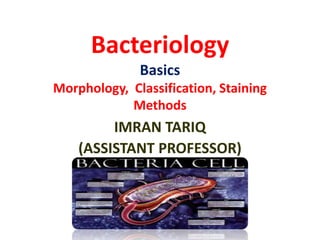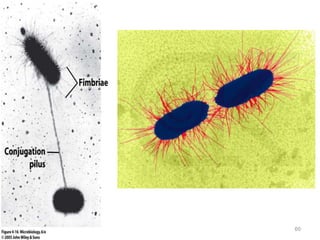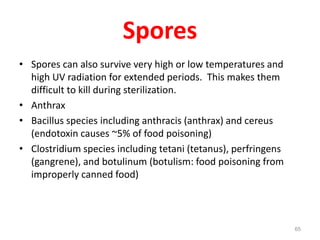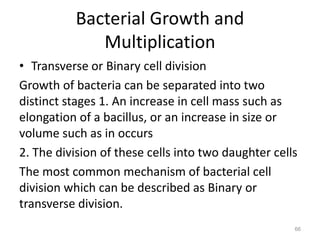This document provides an overview of bacterial morphology, classification, and staining methods. It begins by distinguishing between prokaryotic and eukaryotic cells, noting that bacteria are prokaryotes. It then discusses the key discoveries of Antoni van Leeuwenhoek who invented the microscope and first observed microorganisms. The document proceeds to outline the differences between prokaryotic and eukaryotic cells, focusing on structures like the nucleus, organelles, cell wall composition, and more. It also describes the typical shapes of bacteria including cocci, bacilli, spirilla, and spirochetes.









































































































